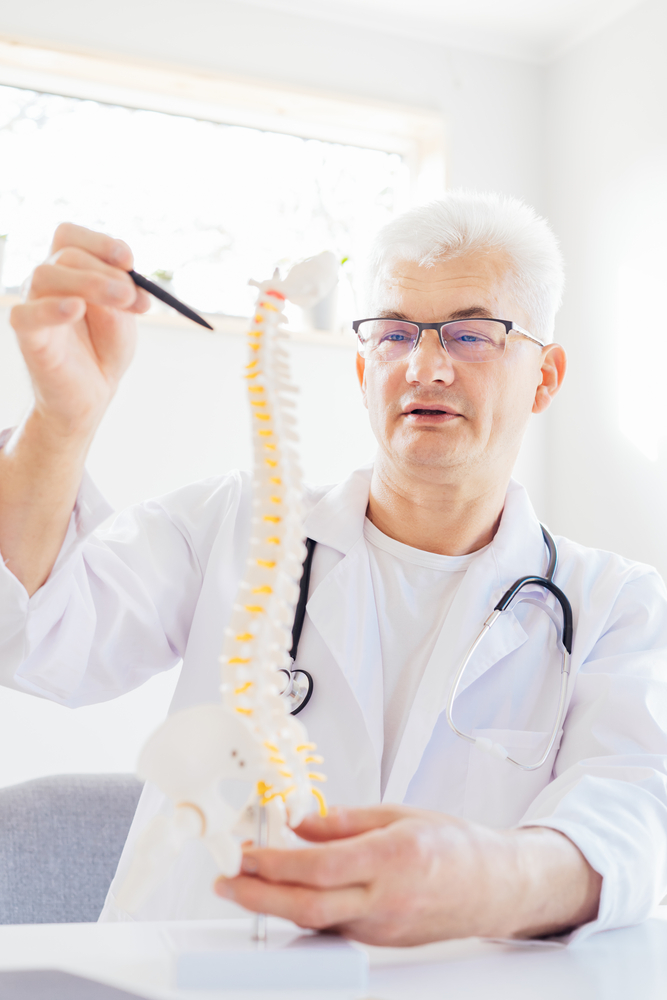
How to Alleviate Your Back Pain Without Surgery
Back pain, it's a common ailment that plagues many of us, ain't it? It sneaks up like a thief in the night, or hits you square after a long day at your desk. Now (and this might surprise you), not everyone is keen on the idea of going under the knife to find relief. And why should they when there's an alternative approach waiting in the wings? Enter chiropractic care – your non-invasive knight in shining armor. Chiropractors focus their attention on the musculoskeletal system , and they've got this knack for pinpointing what's out of whack in your back. They're not just crackin' bones willy-nilly; there’s method to what may seem madness! The goal here’s simple: alleviate pain by restoring proper alignment and improving function without resorting to surgical measures. Now, before you go running off to book an appointment, let’s chat about what exactly goes down during a typical visit. First off, don’t expect any fancy machinery or scalpels lying around; most chiropractors use their hands as their primary tools – imagine that! They'll apply controlled force to nudge those stubborn vertebrae back where they belong. And hey presto! You could
read more →
What is Involved in Chiropractic Care for Auto Accident Injury Recovery?
Oh, when you've been in a car accident, it's like your body has just gone through one of the worst roller coasters ever—only this ride ain't fun at all! The jarring impact can mess with your body's alignment something fierce. That's where chiropractic care comes into play, and boy does it make a difference! Now, what exactly is involved in this kind of chiropractic care for auto accident injury recovery ? First thing's first: You gotta find yourself a good chiropractor. Someone who knows their stuff and has experience with auto injuries (that’s super important!). Once you’ve got that sorted out, they'll usually start by asking you 'bout your symptoms, medical history, and details about the crash. After that initial chat, they're likely to perform a physical exam. They're checking for misalignments or what they call "subluxations" in your spine – these are areas where the spinal joints aren’t moving properly. It’s kinda fascinating how everything in our bodies is connected; one little misalignment can cause pain or issues somewhere else entirely! X-rays might be taken too (though not always), to get a clearer picture of any structural damage. Now
read more →
What is the Role of a Chiropractor in Treating Auto Accident Injuries?
When it comes to the aftermath of an auto accident, many people might only think about the mechanical repairs their vehicles need. However, what's often overlooked is the human body itself and the care it requires after such a jarring event. That's where auto accident injury chiropractors come into play with their specialized skills in treating musculoskeletal injuries. Now, you might be wondering: What exactly does a chiropractor do? Well, they're healthcare professionals - not your typical medical doctors though - who focus primarily on diagnosing and treating neuromuscular disorders, mainly through manual adjustment or manipulation of the spine. Their role becomes crucial after auto accidents because, trust me, these incidents can wreak havoc on one's spinal alignment and overall musculoskeletal system! Firstly (and most folks don't realize this), even a minor fender bender can cause something called whiplash; that's when your head suddenly snaps back and forth faster than you can say "Ouch!" It doesn't really matter if there was no bleeding or visible injury; internal damage to muscles and ligaments around the spine could still be lurking beneath the surface. Chiropractors are trained to detect these hidden culprits which may lead
read more →
What Is Stopping You From Living Pain-Free? Uncover the Power of Injury Chiropractic Care!
Living with pain isn't something you've to simply accept, not when there's such a potent remedy within your grasp! The power of injury chiropractic care is often overlooked, yet it's an incredible resource for those battling the relentless discomfort that accompanies physical ailments. Many people hesitate to explore this form of treatment - but why? The answer might be shrouded in misconceptions or perhaps a lack of awareness about its extensive benefits. Now then, let’s delve into the core reasons that might deter you from seeking this transformative care. For starters, maybe you're skeptical about its effectiveness. It's common to question unfamiliar treatments, especially when conventional medicine tends to dominate our healthcare narrative. Or possibly (and understandably so), there's a bit of fear regarding the adjustment procedures - nobody relishes the thought of discomfort during therapy! Furthermore, some individuals reckon they’ve got too much on their plates already and can’t fathom squeezing in regular chiropractic sessions. Onward we go! Let's dismantle these barriers one by one. Contrary to what skeptics might believe, chiropractic care has been scientifically validated numerous times over. It aims at treating the root cause of pain rather than merely
read more →
What are the types of back pain?
back pain is one of most common reasons people see a doctor or miss days at work. Back pain can range in intensity from a dull, constant ache to a sudden, sharp or shooting pain. There are two types of back pain: acute (short-term) back pain lasts a few days to a few weeks. It usually resolves on its own within a few days with self-care and there is no long-term loss of function. Chronic back pain is pain that continues for 12 weeks or longer, even after an initial injury or underlying cause of back pain has been treated. There are many ways to categorize low back pain – two common types include:. How common is back pain? If you’ve ever suffered from aches and pains in your back, you’re not alone: according to the american association of neurological surgeons, 75 to 85 percent of americans experience back pain at some point in their lives. But knowing what’s causing your pain can be challenging. “the most common complaint is what we characterize as non-specific low back pain, which means we haven’t identified a specific underlying source for why that individual has back pain,” says craig van
read more →
Prevention and Risk Factors
back pain is one of the most common ailments affecting people of all ages. There are ways to reduce your risk factors for back pain and prevent it from worsening. Some of the more useful prevention tips include: maintaining a healthy weight quitting cigarettes (chemicals in tobacco smoke promote the deterioration of spinal disks). National Institutes of Health About 80 percent of americans experience pain in their lower back at some point in their lives, according to the national institutes of health (nih). Most back pain is acute, which means it lasts a few days to a few weeks. But about 20 percent of people affected by acute low back pain develop chronic low back pain, meaning their pain lasts 12 weeks or longer. By working with a pain management specialist , you can find approaches that relieve your chronic back pain and restore your quality of life. Anyone can have back pain. There are also many risk factors or reasons for back pain. You may be more likely to develop it if you have these risk factors: location-specific pain, such as back, neck, arm, and hip pain is associated with short- and long-term health
read more →
When to contact a specialist
Your primary care physician knows you best and should be your first contact for lower back pain . If he or she is unable to diagnose or treat the issue, you may get referred to a specialist, such as a rehabilitation physician (physiatrist). These specialists practice a comprehensive approach to lower back pain , and can diagnose and treat a variety of conditions that have lower back pain as a symptom. Later, you may get referred to a physical therapist, a chiropractor or another practitioner depending on the nature of your back pain. The good news is that surgery is rarely needed for lower back pain. If you’re experiencing back pain of any kind that preoccupies you, makes it difficult to accomplish everyday tasks, and/or is accompanied by other symptoms, it’s time to be seen by a spine specialist. Weill cornell medicine: comprehensive spine in new york, ny is one of the nation’s foremost providers of minimally invasive spinal surgery and treatments. Our experienced neurological professionals will be able to diagnose your condition , determine its severity, and help you identify the best course of action with regard to back pain treatment and management. Don’t let your back
read more →
The Mayo Clinic experience and patient stories
Our patients tell us that the quality of their interactions, our attention to detail and the efficiency of their visits mean health care like they've never experienced. See the stories of satisfied mayo clinic patients. When to see a doctor You may find pain relief through nonsurgical treatments. We consider the diagnosis along with the results of any previous treatments to develop a care plan that’s right for you. Your treatment may include: medication: you may feel better with an over-the-counter medication, such as ibuprofen. If the pain is severe, we may recommend prescription medication. Injections: we inject pain-relieving medications to relieve irritation deep within your spine. Injections such as cortisone are available through our primary care sports medicine doctors. Physical therapy: we guide you through exercises to strengthen the muscles that support your lower back. We also show you how to perform stretches at home to relieve stiffness. When it comes to back pain , there’s good news and bad news. “the good news is back pain rarely is a sign of something serious and often relatively short-lived,” says meghan murphy, m. D. , a neurosurgeon at mayo clinic health system in albert lea
read more →